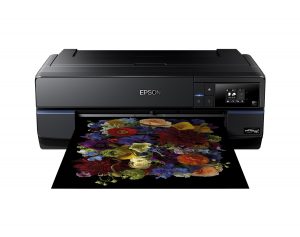There’s lots of things to consider when printing photos and the type of file is a crucial part of the process. The choice of photo file types you use in your image capturing and photo printing process can affect the overall quality of output you can achieve with your photo printer.
There are different formats!?
It may seem a little daunting but there’s really not too much to worry about when confronted with the different types of file format. When capturing images with your digital camera, the choice of file types available will include JPEG , RAW or TIFF files. The file type options available depend on your camera itself. JPEG is a format common to all digital cameras, with RAW and TIFF formats usually being available on higher end cameras only.
JPEG… I’ve heard of that
You most probably have! It’s one of the more common file formats and images saved in JPEG format can be used for both web applications and for print. As JPEG is a compressed format, photos taken using JPEG take up less memory allowing you to maximise the number of images you can store on your camera. The main downside with JPEG format is that this compression process results in some data loss, this is not a huge problem when printing small images but can result in a ‘grainy’ output when enlarging your photos to bigger sizes. To maintain the maximum amount of data, we’d advise using a low compression setting on your camera when saving to JPEG.
RAW
As the name might suggest, RAW files are unprocessed files. They are non-compressed and so retain all the data captured by the camera. This is a format that can then be amended and edited in applications such as photoshop and then exported as a JPEG or TIFF for final printing. If you like to shoot and edit your own photographs and your camera supports RAW, then this is the ideal format to capture your images. It is worth noting that RAW format can be propriety and so may not work with all applications, so it is important to check that your cameras RAW format is supported by your editing suite.
TIFF
Often supported on high-end cameras, TIFF files are like RAW files in that they are ‘lossless’ meaning that they retain the maximum amount of detail captured by the camera. As with RAW, TIFF format creates large files, which makes them ideal for printing very large photos without any loss of quality in the image resolution, but at the expense of high memory use.
Unlike RAW, TIFF files are not manufacturer specific and so can be used freely with most editing suites or even for printing directly from file. RAW is generally regarded as the preferred capture method for images, however, if you want to retain image quality in a format that is universal to work with, then TIFF is a good option.
Whether you choose to use RAW, TIFF or JPEG format to capture your images, we’d advise using the best setting possible within the limitations of your camera and space available to ensure you have an original that will print well at any size.
We have a great range of photo printers and photo media. Explore this and more now.


